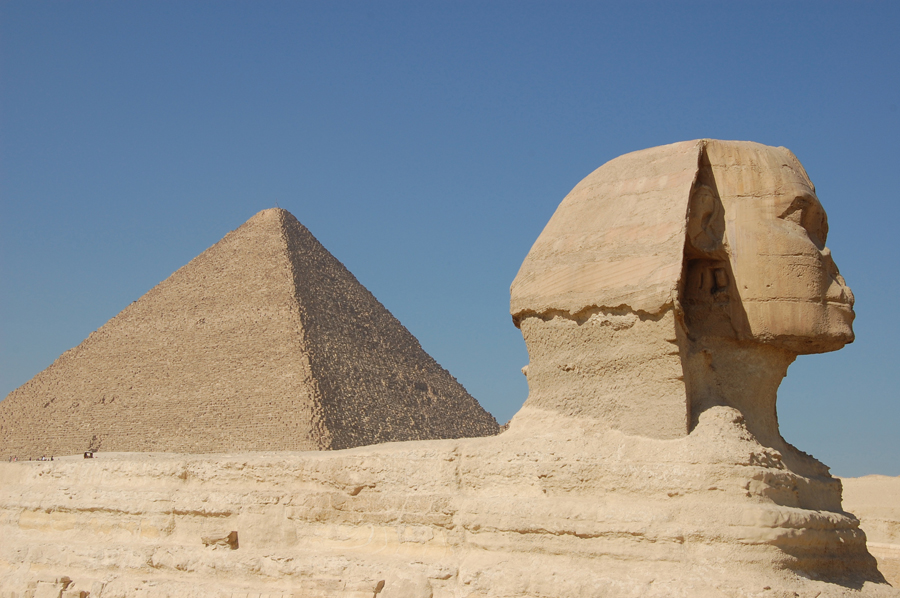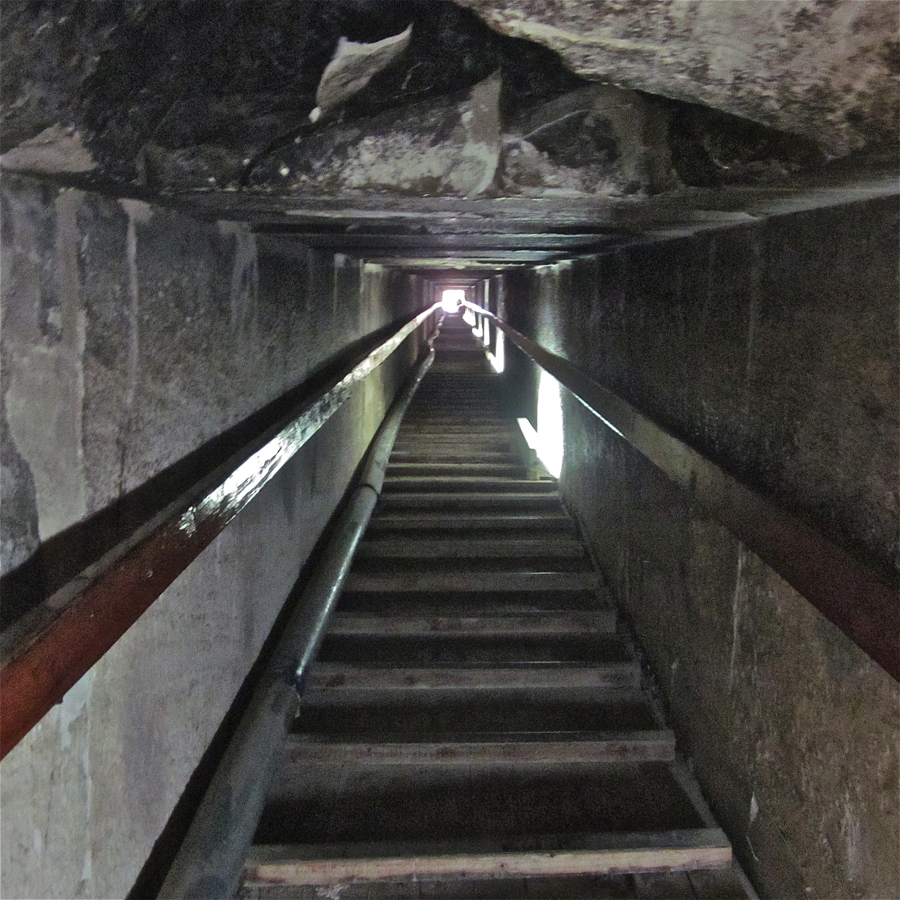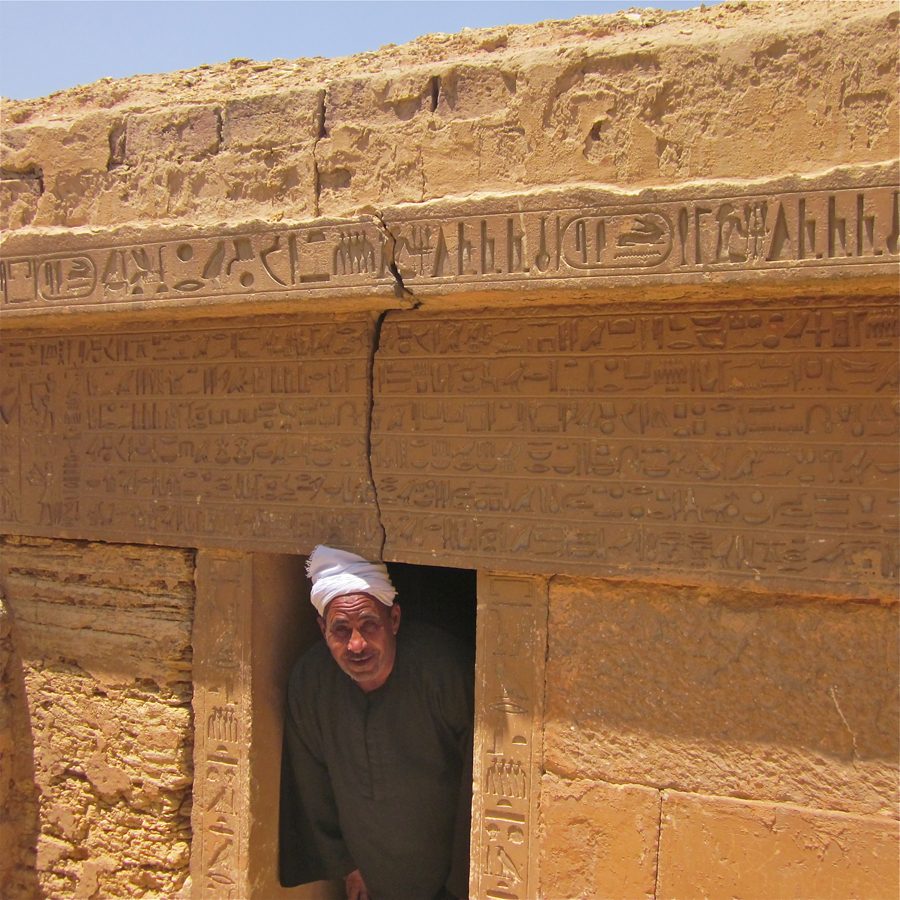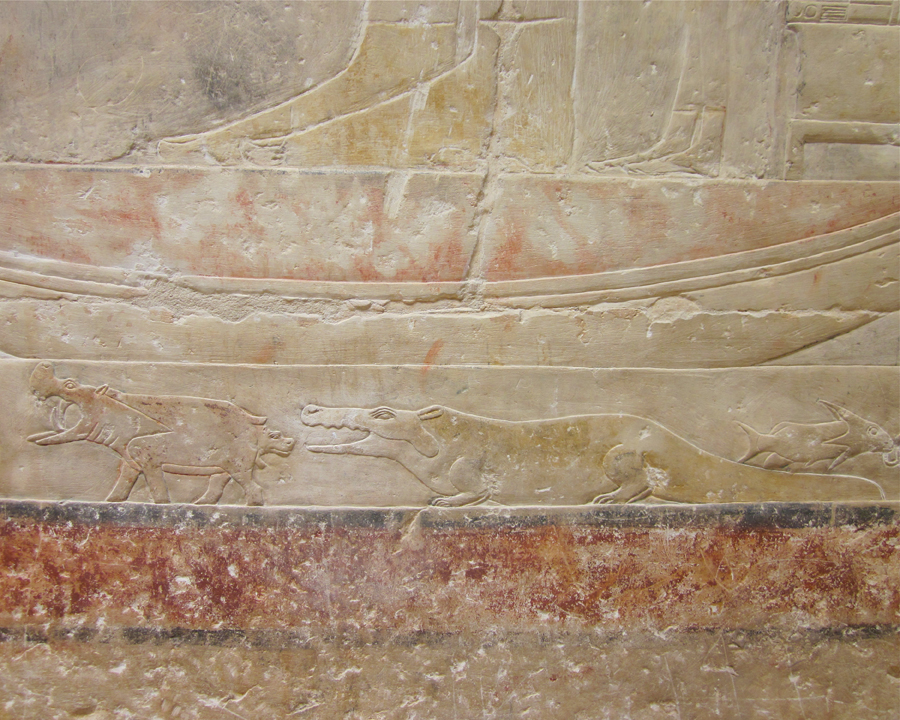The Setting: Pyramids and Tombs
The 4,000-year-old Giza pyramids, holding promises of life after death for Egypt's pharaohs, form an immutable backdrop for events in Cairo. To the south, the pyramid fields and rock-hewn tombs of Dahshur and Saqqara rise in shimmering heat above the Nile Valley, burial ground for the ancient city of Memphis, the birthplace of pharaonic power.
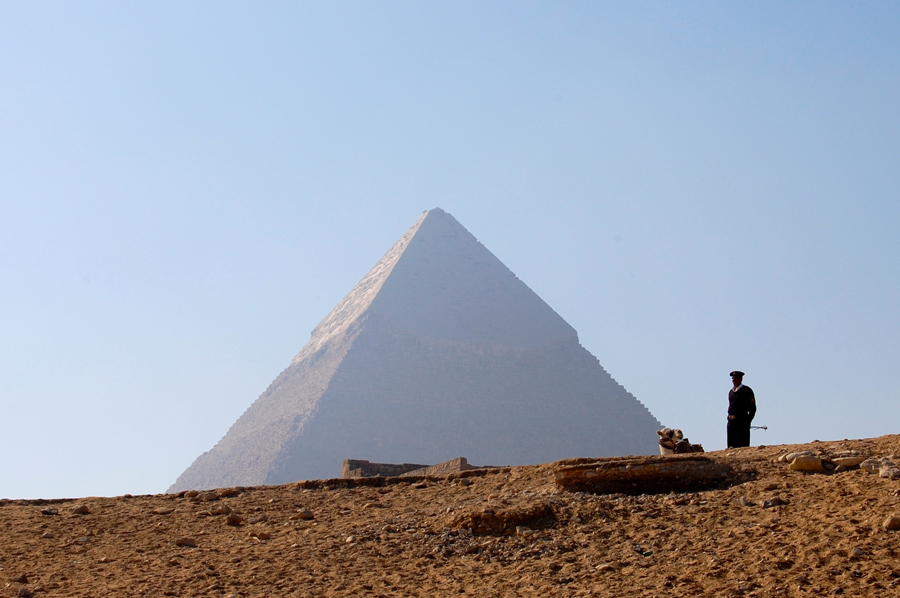 Khafre's pyramid
Khafre's pyramid
The ever-present police and security forces of the Mubarak era convey a calm authority, soon to be disrupted by Egypt’s Arab Spring.
Sphinx and the Great Pyramid
Carved from bedrock, the stone visage of the pharaoh is one of the most recognizable monuments in Egypt.
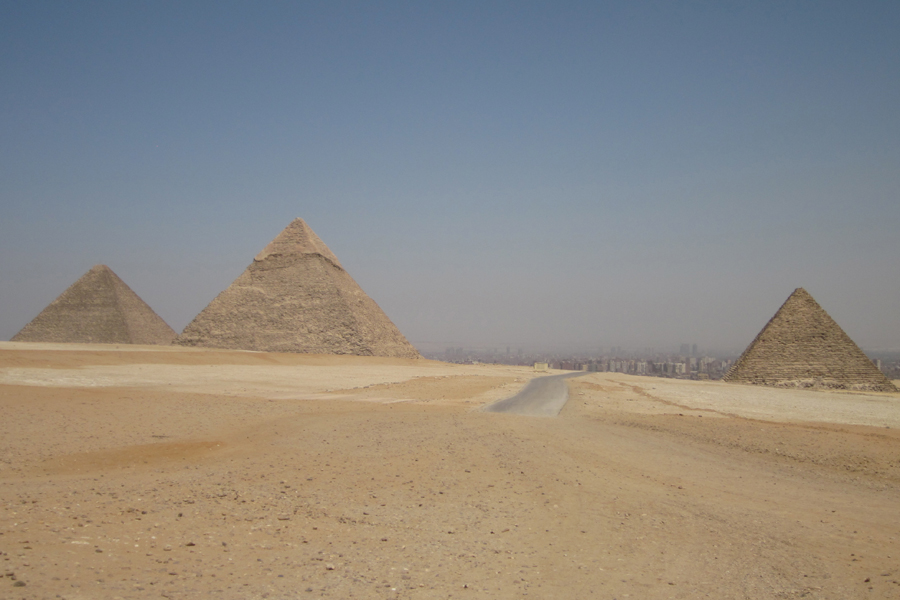
Giza plateau
The pyramid complex occupies a broad sandy plateau rising above the urban expanse of Cairo, seen in the distance.
Egyptian tourists
Families and children enjoy the novelty of a camel ride at the Giza pyramids.
2.5-ton pixels
Up close, the smooth silhouette of the pyramids transform into giant pixels of limestone.
View from within
A long stone passageway leads out from the burial chamber set deep within the Red Pyramid.
Tomb merchant
A little baksheesh (donation) buys a guided tour of this underground tomb in Saqqara, its entrance inscribed with hieroglyphics.
Tomb painting, Saqqara: Nilotic scene
Realistic renderings of the rich animal life of the Nile River characterized tomb art in the New Kingdom (1550-1070 BC) and earlier dynasties. The Nile, an ever-renewing font of water and fertile land, was the source of ancient Egyptian creation myths. Its waters once teemed with hippos and crocodiles that served as important symbols and deities.
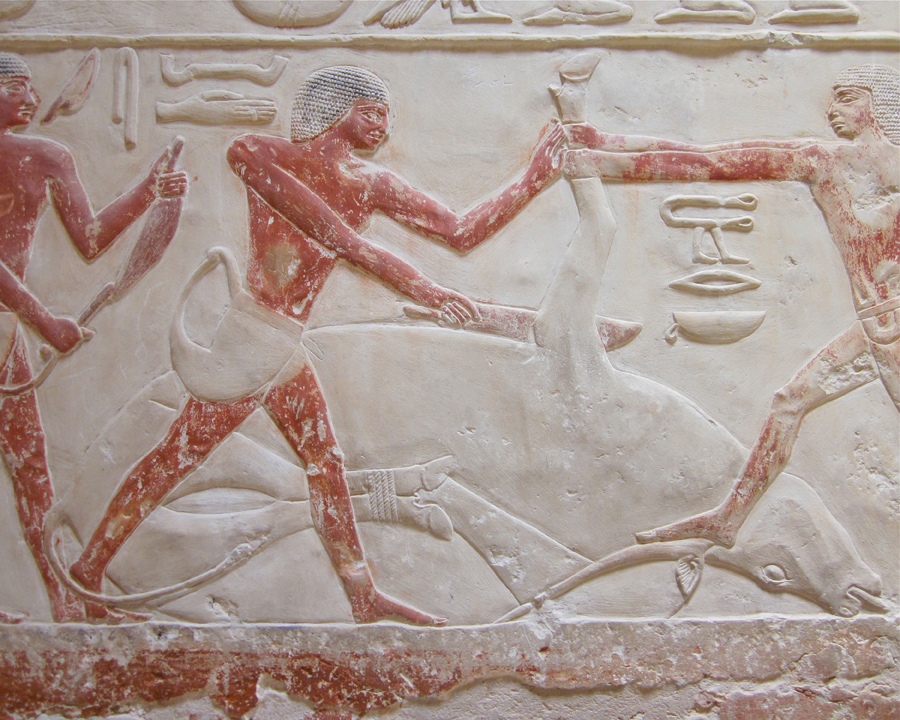
Tomb painting, Saqqara: the “cutting of the foreleg”
The ritual sacrifice of bulls by Egyptian priests was an essential part of ancient Egyptian funeral ceremonies. According to the Book of the Dead, the life force, or “ka”, was transmitted from the quivering foreleg to the mouth of the deceased, enabling them to speak and eat in the afterlife. Egyptian priests were among the first veterinarians: healers of cattle as well as of people. Separate “medicines” emerged only in the third century BC.
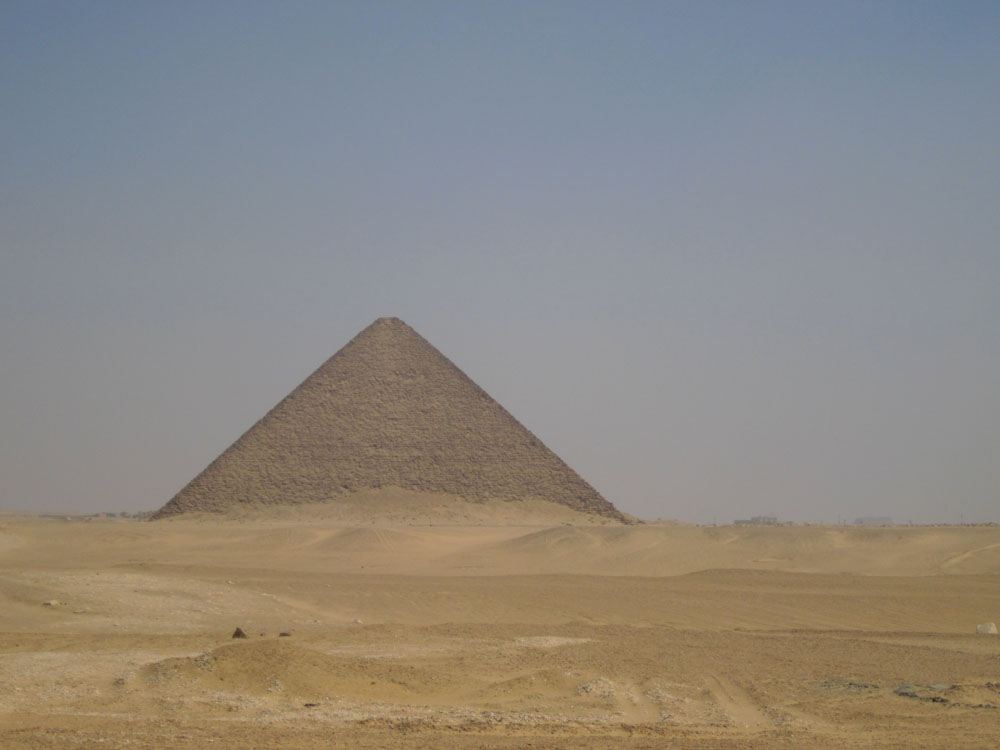
The Red Pyramid, Dahshur
Rising in solitary perfection above drifting dunes, the Red Pyramid in ancient Memphis is the oldest true pyramid in the world.

Bent Pyramid, Dahshur
A 4,600-year-old example of “practice makes perfect”, the Bent Pyramid is considered a transitional form in the evolution of pyramid building. Once engineers recognized the unsupportable steepness of initial construction, they opted for completion at a recalculated "flatter" angle.

